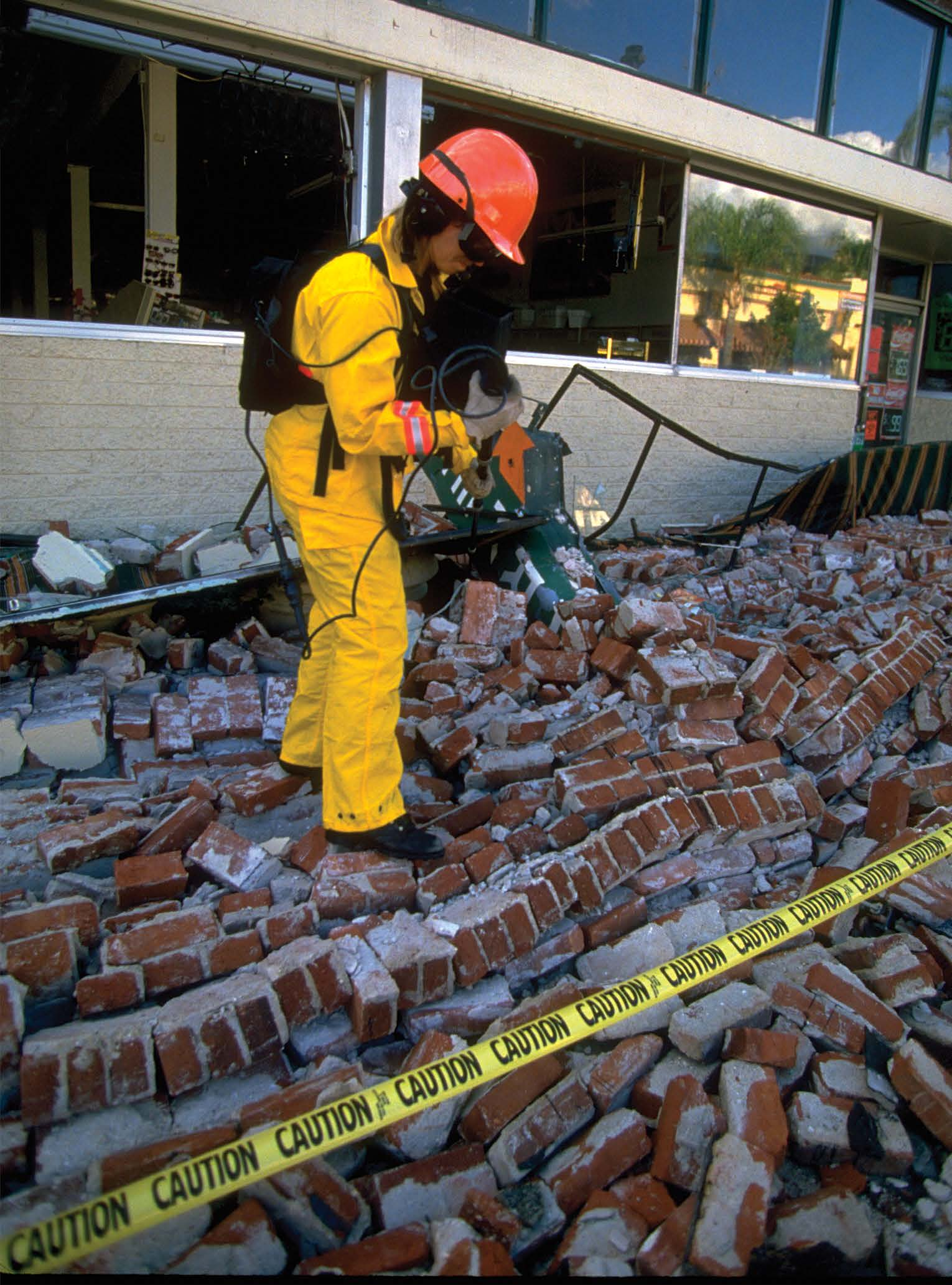Protecting your facility
Identify Earthquake Exposures
Earthquake is a rare natural hazard that can not be prevented or predicted with any certainty. Fortunately, this reality does not preclude preventive action that can greatly reduce the amount of damage sustained in the event of major earth movement. This brochure offers guidelines to address key exposures in an effort to protect your facilities from earthquake-related damage.
Scientists define an earthquake as a sudden and rapid shaking of the earth caused by breaking and shifting rock beneath the earth’s surface. According to the U.S. Geological Survey, each year, about 1,500 earthquakes can be felt in the United States. Worldwide, more than 55,000 earthquakes of a magnitude greater than 3.0 on the Richter Magnitude Scale are felt. The cost of earthquake-triggered damage to buildings and property can be astronomical.

Shown here, failure of an unreinforced masonry building in the 1994 Northridge, Calif., USA, earthquake. (Photo courtesy of FEMA)
The Northridge, Calif., USA, earth- quake, a magnitude 6.7 event that struck in January 1994, is a vivid example, and it is considered the most destructive and costly earthquake to hit the United States since 1906. Though not categorized as “a major earth- quake” by seismologists, it released energy roughly equivalent to 10 billion kilograms of explosives. Causing massive losses, the Northridge quake exceeded US$20 billion in direct dam- age-related costs, including US$12.5 billion in insured losses, according to the Insurance Information Institute. More devastating still was the Kobe earthquake, which struck Japan a year to the day later.
The magnitude 6.9 quake produced total loss costs es- timated at US$200 billion. With careful advance planning, proper design and protection of buildings and equipment, and training of employees, you can greatly reduce the potential physical damage and business interruption as- sociated with the devastating forces of an earthquake.
Click here for more details in [English]
